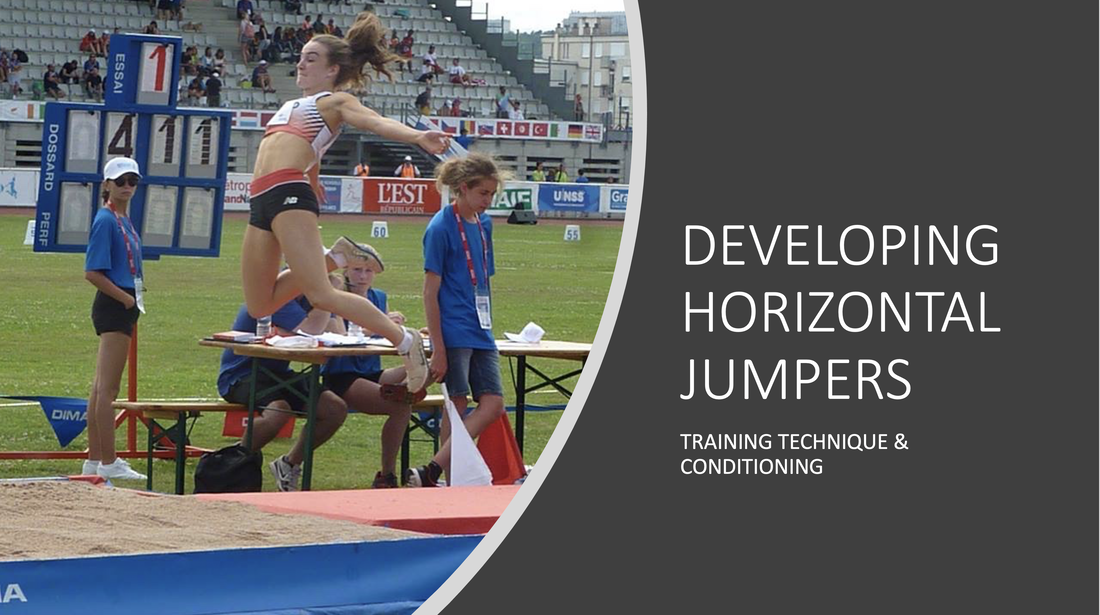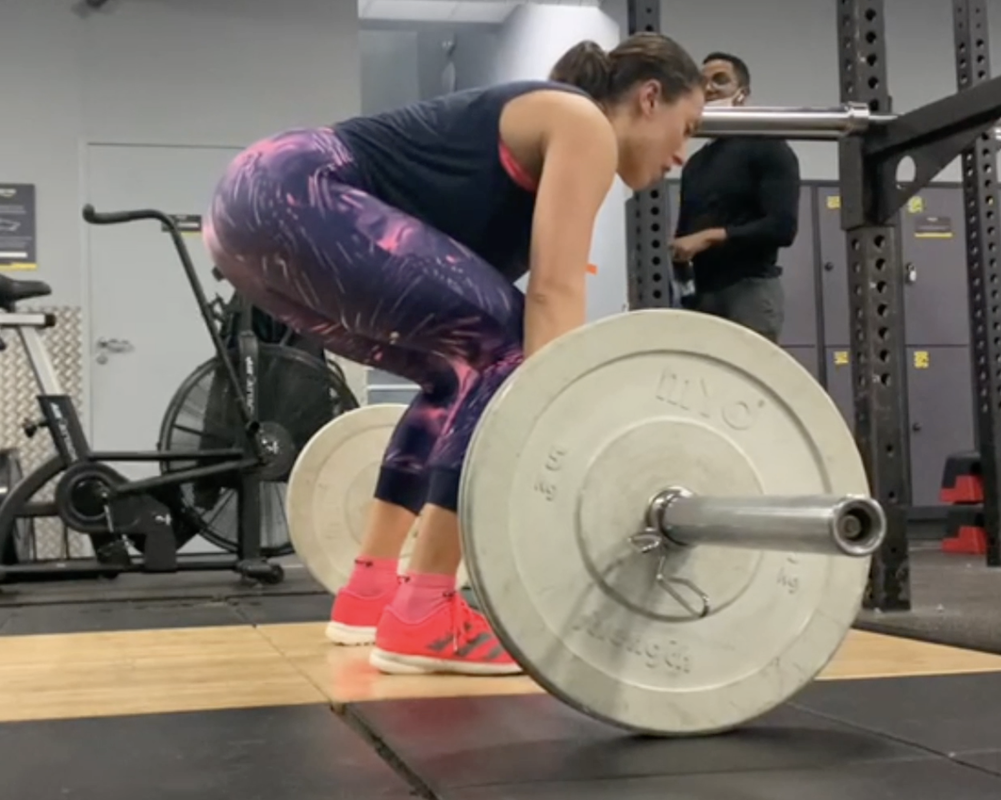|
Recently, I have been doing a number of presentations on the long jump. I’ve done three for Ireland Athletics, one for Belgian Athletics and another two for England. No pressure then! Well, at least I’m talking about and showing videos on something that I am passionate about. It is almost one of those scenarios where a hobby has morphed into a job of sorts. Fifteen years on from when I seriously started coaching in south-west London my experiences as a coach have moved on significantly. And in a number of ways I’d not have thought would have happened. One thing that has become apparent as my coaching career developed was how much I thought I knew and then realised I didn’t. I was a near 26-foot long jumper in my prime … so, not unnaturally I thought I knew quite a bit. However, now, I look back and can see how much I didn’t. I’m still learning now. It really is a case of the more you think you know the more you realise you don’t know. I’ve always possessed an enquiring mind and I like to try to find answers and do research. However, coaching the long jump is both science and art and many of the “answers” don’t actually exist in textbooks or out there on the web. You have to find your own answers and develop your own solutions. And this must be packaged within a coaching philosophy (“Your way of doing and implementing”). TO BECOME A BETTER COACH AND JOIN THE JUMPS SQUAD CLICK HERE I talk about the latter on my YouTube channel in the members’ area and look, for example, at training planning methods and how once you follow your preferred model you still need to put your philosophy onto it. When taking the presentations I mentioned at the start, I stress that a coach needs to develop their way of doing – yes, this must be based on science but it must also be based on knowing what works from your own coaching experience. And, you have to be quite dogmatic in sticking to its key tenants (as long of course as your philosophy works!). You can’t be a philosophy or training inclusion butterfly, flitting from one idea to another, always tinkering too much and making big changes, as you won’t follow a pathway that will take your jumpers to the destination that provides the strongest of opportunities to improve and adapt. Consistency is needed. Too many diversions along the way will do just that and divert them from adapting and developing optimally. However, having said that you still need to be reflexive and welcome to a little tweaking in particular when you have relevant experience - specific experimentation. An example, on a recent presentation for Ireland I talked about the long jump take-off and how there are different ways to set this up. Fifteen years back I would not have known very much about this topic at all. I explained how I was experimenting with step placements into the board and also pushing from the penultimate step into the take-off step. This was done with a couple of experienced jumpers who had the technical and physical long jump literacy to do this. I’d explained to them that I didn’t know what to expect i.e. it might work or might not. We discussed what happened and there were differences that affected the jump. One jumper seemed to benefit more than the other (more on this in another post/video). So, unless you try different things, you’ll not know what else might unlock another 15-20cm. As a coach I am in a position to be able to understand what I am trying to do (most of the time!). All coaches hopefully will get to this level where, for example, armed with a huge long jump (or other event) backstory and history they can begin to really understand how to coach their event (I’m not so far down the line on my triple jump journey). It’ll take time, effort and some tinkering. Develop your philosophy. Develop your knowledge of what does work but don’t be afraid to listen, experiment and tinker (within your parameters). In doing so you will become the coach you dreamt of becoming and just maybe your athletes will thank-you!
2 Comments
I often get questions and queries submitted to me via my YouTube channel. There are always many when it comes to weight training’s benefits for sports performance. One in particular piqued my interest as it “suggested” that Arnold Schwarzenegger would have run 9.4 for the 100m! Here’s a little more detail and the question and thoughts posed by Randuuum – a channel member. “Running and jumping are nearly entirely neurological and infinitely involve more reflex and coordination than muscle. If muscle created downward force, then Arnold Schwarzenegger would be a 9.4 100m runner and 35-foot long jumper!” So, you can begin to understand what the compromises might be with weight training for sports performance. I had a chat back and forth in the comments section with Randuuum, and as said we agreed on quite a lot. Weight training may not target the most powerful of fast twitch muscle fibres Weight training due to the speed of lift in particular tends to target type 2a intermediate fast twitch fibres. These are not the most power producing of fast twitch muscle fibres – type 2bs are. Indeed, studies indicate power lifters have more of these than 2b fibre types. Neural Adaptation – perhaps the dominant benefit There is a secondary contribution of lifting heavy weights fast to sprint and jump performance and it indeed may well be the dominant one i.e. the more important for when considering the benefits of weight training for sprints and jumps and this is neural adaptation/stimulation. Basically, lifting heavier weights may allow for the athlete to recruit greater numbers of fast twitch muscle fibres (paradoxically including type 2bs) and because of this create a neural system that can do so when sprinting or jumping. The larger the fast twitch motor units and fibres that are recruited by neural energy the more power potential that will be on offer to be sued by the athlete. So, it could be argued that it’s neural transference as opposed to muscular adaptation that’s key to enhancing sprint and jump performance through the use of weights – however, as usual there’s more to it. In the video that goes with this article I try to add clarity to this neural element by looking at modern cars and how to get the most from the engine there’s a lot of computer and electrical energy required … so, for engine read muscles and for electrical and computer energy read brain and neural system for the sprinter/jumper. So, being highly charged neurally i.e. in the zone seems to be crucial when it comes to maximising transference and adaptation from weights. You’ve got to do the right weight training You’ve got to select more than just concentric (muscular shortening) exercises. I utilise triphasic training – which also includes eccentric and isometric exercises (muscular lengthening and no-movement actions) and complex the weights exercises often with plyos and other jump exercises in the same workout. This is seen to further enhance fast twitch muscle fibre and motor unit recruitment. Make sure your training programme focusses on transference… This means that what you do in the weights room (which in itself must be specific and targeted to what will really improve jumping and sprinting) must be part of a training plan that integrates all aspects of training toward that goal of, for example, improving jump performance. To do this I use undulating periodisation and don’t favour traditional linear periodisation means. As I say in the associated video: “You don’t want to get a mismatch between those training modalities.” The value of eccentric and isometric “power” can be exemplified by using the long jump as a prime example of where this braking absorbent before energy return muscular power is needed in abundance. Much research indicates that for the long jump take-off that eccentric power is key. You only need so much maximal strength Much contemporary coaching thought has it that you only need a certain albeit high level of basic (concentric) strength. Once this level is attained then it’s argued that going beyond this will have limited if any further benefit to enhancement of performance. It’s at this stage in particular where optimising eccentric and isometric power could really pay dividends. Eccentric muscular actions target fast twitch muscle fibre Research indicates that eccentric actions can target greater numbers of fast twitch muscle fibres and this in itself may be another further benefit of eccentric training. Adaptation and time spent training a particular way… The body needs time to adapt to a training stimulus - although perhaps not as much as may have been previously suggested. Doing the same type of training constantly will at the least slow adaptation and at worse create the wrong type of adaptation. Adaptation that is actually contrary to what you may desire. So, a long block of concentric emphasis weight training without a carefully constructed training programme nor the introduction of other muscular adaptation training and concerted speed work may result in poor/stunted training adaptation as far as a long jumper is concerned, for example. Compromising muscular adaptation – rest and recovery The other crucial factor when it comes to deriving positive and optimal transference from your training (whether weights or anything else) is rest and recovery. You need to ensure that you provide both mind and muscle with enough time to adapt physically and neurally to all training stimuli. There’s a growing debate in coaching and sports science circles about how the body adapts to training. The older GAS method of Hans Selye may if not discredited be seen to not apply to sports specific adaptation. More on that in another video/article. This article accompany a video that will be on my YouTube channel shortly (13th March 2021) I have been working with CoachTube to provide some coaching resources for long and triple and track coaches. My first long-form course is now available on the site (link below). It's a two video offering which goes into detail about How to plan training and How to construct a training phase (early season focus).
I explain why undulating periodisation and a specific highly focussed and detail specific approach works. Many coaches can waste time with unnecessary general volume. Why de-train your jumpers and spend months getting their sharpness back? Many of the world's top coaches employ a similar rationale as I do and what you will learn about on the course. For many it's a case of "Not what training you do but what training you don't do". The hardest part of constructing a training plan can often be about what you leave out. Hopefully, I'll simplify this process. Specific is the way to go Many years back I realised that specific is the way to go. Long and triple jump requires high-power outputs and copious amounts of speed. You won't get that from 300m repeats. Specific "volume" can be created by other means. For me it's all about drills and maximising their usage to develop all the required components of the long and triple jump. You'll see first hand how I do this on in this two video 30min plus course. There are also associated notes to go with the videos which will help to further explain what you are seeing and hearing. And there are also links to other resources which will aid your learning on how to coach the long and triple jump. Look out for more courses from me on Coach Tube. |
Categories
All
Click to set custom HTML
|
Proudly powered by Weebly





 RSS Feed
RSS Feed
